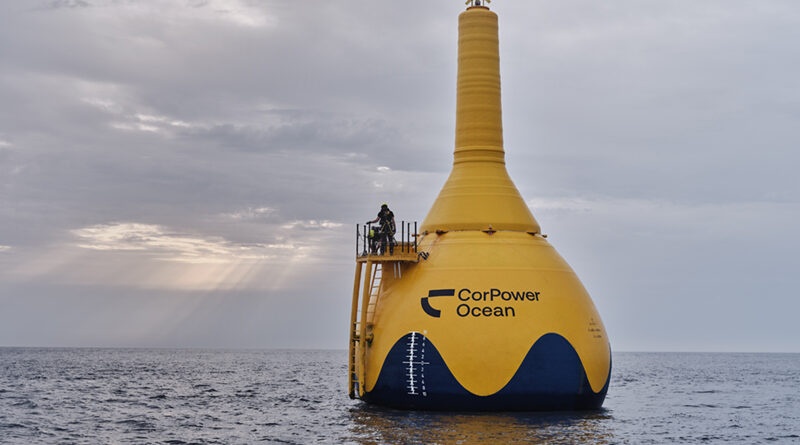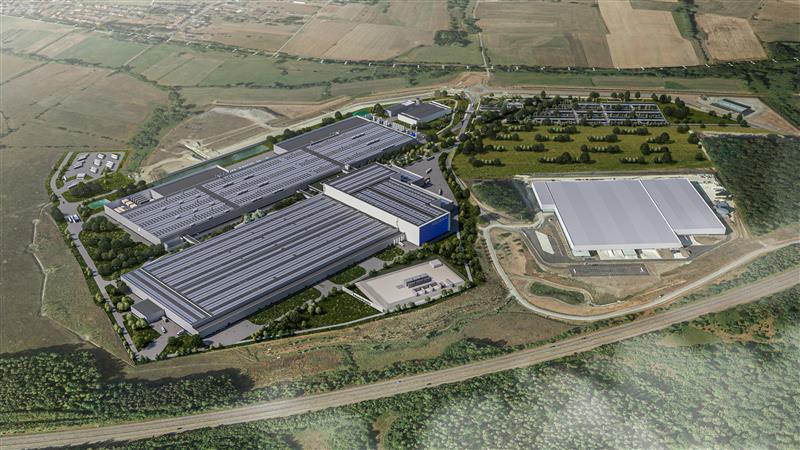
Scaling homegrown clean technologies is integral to Europe’s energy sovereignty
Europe’s clean energy transition has always been a balancing act. Sustainability and affordability have dominated the agenda in recent years, shaping discussions around the Clean Industrial Deal and defining Europe’s approach to clean technology. But recent geopolitical events have brought energy security back into sharp focus. The war in Ukraine exposed the dangers of external energy dependence and RePowerEU took the first steps in addressing it. But as Europe now faces the prospect of fending for itself, the imperative is clearer than ever: resilience is as critical as sustainability and competitiveness.
Regardless of which pillar of the energy trilemma you prioritise, the solution remains the same: scaling a strong, domestic clean tech sector. By securing control over our energy supplies and production technologies, we can reduce reliance on volatile foreign supply chains, cut emissions, and create thousands of jobs across the EU. We must now double down on scaling this sector.
It is easy to dwell on the challenges ahead, but we should not overlook the progress already made. The EU’s regulatory framework has played a crucial role, particularly through demand-side measures like the Fit for 55 package, which has generated a strong pipeline of new projects.
Sectoral targets have driven investment across value chains, from batteries to green hydrogen, creating strong conditions for new ventures to emerge. As an example from our portfolio, CorPower – its recent Series A funding was underpinned by clear policy signals from the EU Renewable Energy Directive, which requires Member States to source 5% of its renewable energy from innovative technologies like wave power.
More recently, the focus has shifted to supply-side measures. The Net-Zero Industry Act, committing the EU to producing 40% of its clean technology demand domestically, is a decisive step toward capturing the economic benefits of the transition while strengthening Europe’s industrial resilience. This provision alone is already strengthening the pipeline of industrial projects.
But a pipeline of projects is not enough. The Clean Industrial Deal must deliver a coherent industrial strategy that safeguards Europe’s clean tech champions and unlocks the finance needed to scale. President von der Leyen’s pledge to make this a Commission of scale-ups and investment is promising—but now, ambition must turn into action.
Drawing on InnoEnergy’s track record as an investor supporting over 200 clean tech companies to date (3 of which are industrial unicorns) and having mobilised €25 billion investment, I outline the three critical pillars needed to secure Europe’s clean transition and scale homegrown clean technologies.
Securing sustained and certain demand for clean tech made in Europe
Europe has no shortage of talented entrepreneurs and clean tech start-ups – InnoEnergy’s own portfolio of over 200 active clean tech champions is testament to that. What it needs are the right conditions for investment to flow at speed and scale. For investors, predictability is paramount: stable political commitments to climate action, a clear regulatory framework, and certainty of demand. When offtake is predictable, so are revenues, and investment decisions are far easier.
Europe has made real progress with a clear political message: there is no turning back on climate ambition. The EU’s climate neutrality target, soon to be complemented by a binding 2040 goal of 90% emission reduction, is key to maintaining investor confidence. Specific targets, like those in the Renewable Energy Directive, and enforcement mechanisms like penalties for non-compliance, are crucial to translating Europe’s climate ambition into certainty.
The Net-Zero Industry Act and the Clean Industrial Deal take an important step by ensuring that when public money is spent – whether through auctions for renewables, public procurement, or national support schemes – it supports homegrown clean tech.
Successful implementation of local content requirements across the board, including for EU funding programs would further strengthen demand for EU-made technology.
Still, more could be done to mobilise private purchasers. While no single approach fits all sectors, voluntary commitments have proven effective in some industries. For instance, to decarbonise their supply chain, Heineken became a seed investor of the low-carbon fertiliser producer FertigHy we launched. Others, like sustainable aviation fuels, require binding mandates. A targeted, product-specific approach could also drive further demand. Setting clear targets for low-carbon materials in industries such as premium cars, batteries and foods would have significant impact.
Mobilising private capital remains Europe’s biggest untapped opportunity
The investment opportunity for clean tech cannot be underestimated. But the scale of investment required – estimated at €450 billion additional annual investment 2030 as outlined by Mario Draghi –calls for a fundamental shift in how Europe finances its clean industrial transformation. InnoEnergy’s portfolio alone will require €160bn before 2030.
The Clean Industrial Deal recognises this, introducing new financing measures. The expansion of InvestEU, with an additional €2.5 billion in guarantees, is a welcome step in de-risking investments. Similarly, earmarking Innovation Fund revenues for clean tech manufacturing – both in CAPEX and production phase – sends a good market signal.
But public finance cannot bear the cost alone. Private capital must do the heavy lifting. Yet, we’re still missing the right financial instruments to mobilise funds at scale, ensuring that every public euro unlocks several more from institutional and other private investors.
One solution is a dedicated fund raising €70 billion in private capital through green bonds, de-risked by a €1–2 billion annual provision from the EU budget as a guarantee. Over 15 years, such a vehicle could unlock up to €500 billion of private capital for clean tech scale-ups by tapping into Europe’s vast, underutilised pension and insurance savings.
Guarantees have already proven effective in mobilising private investment through InvestEU, but not at the required scale. This approach offers a dual benefit: allowing European citizens to invest in the continent’s industrial future while finally enabling cross-border capital pooling, something fragmented European markets have long struggled with.
This instrument could serve as the flagship initiative within the Competitiveness Fund, which will house an array of financial instruments under the new long-term EU budget.
There is no time to lose. With 2030 targets on the horizon, investment decisions must be taken now to ensure projects are operational in time.

The right conditions for building clean industrial plants
The final pillar to enable clean tech to ramp up and reach scale focus on the practical bottlenecks encountered by projects building their plants: access to affordable, decarbonised energy, land, and faster permitting.
For projects building clean solutions for hard-to-abate sectors, long-term access to clean and affordable electricity is essential. Recognising this, the Clean Industrial Deal includes a €500 million Power Purchase Agreement (PPA) program to support SMEs and energy-intensive industries. This initiative will help de-risk clean tech start-ups, enabling them to secure long-term contracts at stable prices. Its swift deployment will be critical.
While much progress has been made on permitting, it remains a significant bottleneck. Authorities at all levels – EU, national, regional, and local – must accelerate efforts to streamline, digitise, and prioritise permits for strategic clean tech projects. The European Commission’s should make sure that regulations under the revised Renewable Energy Directive and the Net-Zero Industry Act swiftly translate into real results.
Finally, access to land must not be overlooked. Industrial sites must be well-connected to logistics and energy infrastructure, yet bureaucratic delays continue to slow development. Prioritising brownfield redevelopment – repurposing former industrial sites – can accelerate market entry.
France is leading by example. It has identified 22,000 hectares of industrial land needed by 2030, much of it repurposed. To fast-track access, 55 turnkey industrial sites have been earmarked, including 10 gigafactory-proof locations, backed by €1 billion in government funding. Holosolis, a photovoltaic manufacturer InnoEnergy launched in 2023, demonstrates this approach can deliver results. The company was able to establish its factory on a previously permitted site, bypassing administrative delays. Scaling this model across Europe should now be a priority.
Conclusion
Scaling homegrown clean technologies is not just central to Europe’s decarbonisation agenda, it is critical for energy security and long-term growth. The pipeline of projects is strong, and the policy framework is robust. The challenge now is execution. By ensuring predictable demand, mobilising private capital, and removing barriers to scale, Europe can cement its leadership in clean tech, and secure its economic and energy future.




